A Comparison of Physical and Numerical Modeling of Homogenous Isotropic Propeller Blades
Abstract
:1. Introduction
2. Model Tests
2.1. Propeller Geometries
2.2. Production of Flexible Blades
2.3. Test Executions
3. FSI Simulations
- explicit algorithm can be used, which means that the fluid and the structure solvers are not necessarily in the processor memory at the same time and that the mapping between the two codes may happen at each time-step (and not at each internal iteration)
- the analysis does not need to be time accurate, as an equilibrium state with a static solution is desired
- material damping can be increased
- first-order integration in time may be used
Numerical Setup
4. Results
Blade Displacements
5. Discussion
Author Contributions
Funding
Acknowledgments
Conflicts of Interest
Abbreviations
| FSI | Fluid-Structure Interaction |
| CFD | Computational Fluid Dynamics |
| FVM | Finite Volume Method |
| FEA | Finite Element Analysis |
| FEM | Finite Element Method |
| MRF | Multi-Reference Frame |
| SST | Shear Stress Turbulent model |
| RST | Reynolds Stress Turbulent model |
| rps | revolutions per second |
Appendix A. Propeller Geometry
Appendix A.1. P1374
- Propeller diameter................................ : 250.000 (mm)
- Hub diameter........................................ : 60.000 (mm)
- Number of blades..................................: 4
- Expanded area ratio..............................: 0.602
- Expanded “total” skew angle..............: 23.067 (deg.)
| - | mm | mm | mm | mm | mm | mm | mm | mm | mm | deg |
|---|---|---|---|---|---|---|---|---|---|---|
| r/R | r | Lfor | Laft | b | cs | xr | eo | fo | P | Fi |
| 0.24 | 30 | 16.67 | −16.67 | 33.35 | 0 | 0 | 9.51 | 0.28 | 269.5 | 55.03 |
| 0.25 | 31.25 | 18.12 | −17.22 | 35.34 | 0.45 | 0 | 9.38 | 0.85 | 269.74 | 53.95 |
| 0.3 | 37.5 | 25.21 | −19.78 | 44.99 | 2.71 | 0 | 8.68 | 1.69 | 270.84 | 48.98 |
| 0.35 | 43.75 | 31.96 | −22.13 | 54.09 | 4.91 | 0 | 8 | 2.19 | 271.81 | 44.68 |
| 0.4 | 50 | 38.26 | −24.34 | 62.6 | 6.96 | 0 | 7.35 | 2.56 | 272.66 | 40.96 |
| 0.5 | 62.5 | 48.98 | −28.62 | 77.6 | 10.18 | 0 | 6.12 | 3.08 | 273.96 | 34.9 |
| 0.6 | 75 | 55.93 | −33.46 | 89.39 | 11.24 | 0 | 5 | 3.35 | 274.74 | 30.24 |
| 0.7 | 87.5 | 57.33 | −39.65 | 96.98 | 8.84 | 0 | 3.98 | 3.36 | 275 | 26.57 |
| 0.8 | 100 | 50.68 | −47.81 | 98.49 | 1.44 | 0 | 3.05 | 3 | 272.05 | 23.41 |
| 0.9 | 112.5 | 31.88 | −57.23 | 89.1 | −12.68 | 0 | 2.23 | 2.08 | 259.41 | 20.15 |
| 0.95 | 118.75 | 14.71 | −60.34 | 75.05 | −22.81 | 0 | 1.85 | 1.35 | 248.38 | 18.41 |
| 0.975 | 121.88 | 1.87 | −59.42 | 61.29 | −28.77 | 0 | 1.68 | 0.9 | 241.52 | 17.51 |
| 0.99 | 123.75 | −9.69 | −55.61 | 45.92 | −32.65 | 0 | 1.56 | 0.54 | 236.97 | 16.95 |
| 0.995 | 124.38 | −15.66 | −52.31 | 36.65 | −33.99 | 0 | 1.54 | 0.38 | 235.39 | 16.76 |
| 1 | 125 | −25.99 | −44.74 | 18.75 | −35.36 | 0 | 1.5 | 0 | 233.75 | 16.57 |
Appendix A.2. P1565
- Propeller diameter................................ : 250.000 (mm)
- Hub diameter........................................ : 60.000 (mm)
- Number of blades..................................: 4
- Expanded area ratio..............................: 0.602
- Expanded “total” skew angle..............: 0.0 (deg.)
| - | mm | mm | mm | mm | mm | mm | mm | mm | mm | deg |
|---|---|---|---|---|---|---|---|---|---|---|
| r/R | r | Lfor | Laft | b | cs P1566 | xr | eo | fo | P | Fi |
| 0.24 | 30 | 16.67 | −16.67 | 33.35 | 0 | 0 | 9.51 | 0.28 | 269.5 | 55.03 |
| 0.25 | 31.25 | 17.67 | −17.67 | 35.34 | 0 | 0 | 9.38 | 0.85 | 269.74 | 53.95 |
| 0.3 | 37.5 | 22.49 | −22.49 | 44.99 | 0 | 0 | 8.68 | 1.69 | 270.84 | 48.98 |
| 0.35 | 43.75 | 27.04 | −27.04 | 54.09 | 0 | 0 | 8 | 2.19 | 271.81 | 44.68 |
| 0.4 | 50 | 31.3 | −31.3 | 62.6 | 0 | 0 | 7.35 | 2.56 | 272.66 | 40.96 |
| 0.5 | 62.5 | 38.8 | −38.8 | 77.6 | 0 | 0 | 6.12 | 3.08 | 273.96 | 34.9 |
| 0.6 | 75 | 44.69 | −44.69 | 89.39 | 0 | 0 | 5 | 3.35 | 274.74 | 30.24 |
| 0.7 | 87.5 | 48.49 | −48.49 | 96.98 | 0 | 0 | 3.98 | 3.36 | 275 | 26.57 |
| 0.8 | 100 | 49.24 | −49.24 | 98.49 | 0 | 0 | 3.05 | 3 | 272.05 | 23.41 |
| 0.9 | 112.5 | 44.55 | −44.55 | 89.1 | 0 | 0 | 2.23 | 2.08 | 259.41 | 20.15 |
| 0.95 | 118.75 | 37.53 | −37.53 | 75.05 | 0 | 0 | 1.85 | 1.35 | 248.38 | 18.41 |
| 0.975 | 121.88 | 30.64 | −30.64 | 61.29 | 0 | 0 | 1.68 | 0.9 | 241.52 | 17.51 |
| 0.99 | 123.75 | 22.96 | −22.96 | 45.92 | 0 | 0 | 1.56 | 0.54 | 236.97 | 16.95 |
| 0.995 | 124.38 | 18.32 | −18.32 | 36.65 | 0 | 0 | 1.54 | 0.38 | 235.39 | 16.76 |
| 1 | 125 | 9.38 | −9.38 | 18.75 | 0 | 0 | 1.5 | 0 | 233.75 | 16.57 |
Appendix A.3. P1566
- Propeller diameter................................ : 250.000 (mm)
- Hub diameter........................................ : 60.000 (mm)
- Number of blades..................................: 4
- Expanded area ratio..............................: 0.602
- Expanded “total” skew angle..............: 23.000 (deg.)
| - | mm | mm | mm | mm | mm | mm | mm | mm | mm | deg |
|---|---|---|---|---|---|---|---|---|---|---|
| r/R | r | Lfor | Laft | b | cs P1565 | xr | eo | fo | P | Fi |
| 0.24 | 30 | 16.67 | −16.67 | 33.35 | 0 | 0 | 9.51 | 0.28 | 269.5 | 55.03 |
| 0.25 | 31.25 | 17.39 | −17.95 | 35.34 | −0.28 | 0 | 9.38 | 0.85 | 269.74 | 53.95 |
| 0.3 | 37.5 | 20.68 | −24.3 | 44.99 | −1.81 | 0 | 8.68 | 1.69 | 270.84 | 48.98 |
| 0.35 | 43.75 | 23.47 | −30.62 | 54.09 | −3.58 | 0 | 8 | 2.19 | 271.81 | 44.68 |
| 0.4 | 50 | 25.71 | −36.9 | 62.6 | −5.59 | 0 | 7.35 | 2.56 | 272.66 | 40.96 |
| 0.5 | 62.5 | 28.34 | −49.27 | 77.6 | −10.46 | 0 | 6.12 | 3.08 | 273.96 | 34.9 |
| 0.6 | 75 | 28.19 | −61.2 | 89.39 | −16.51 | 0 | 5 | 3.35 | 274.74 | 30.24 |
| 0.7 | 87.5 | 24.72 | −72.26 | 96.98 | −23.77 | 0 | 3.98 | 3.36 | 275 | 26.57 |
| 0.8 | 100 | 17.01 | −81.48 | 98.49 | −32.23 | 0 | 3.05 | 3 | 272.05 | 23.41 |
| 0.9 | 112.5 | 2.77 | −86.33 | 89.1 | −41.78 | 0 | 2.23 | 2.08 | 259.41 | 20.15 |
| 0.95 | 118.75 | −9.41 | −84.46 | 75.05 | −46.94 | 0 | 1.85 | 1.35 | 248.38 | 18.41 |
| 0.975 | 121.88 | −18.97 | −80.26 | 61.29 | −49.61 | 0 | 1.68 | 0.9 | 241.52 | 17.51 |
| 0.99 | 123.75 | −28.29 | −74.21 | 45.92 | −51.25 | 0 | 1.56 | 0.54 | 236.97 | 16.95 |
| 0.995 | 124.38 | −33.47 | −70.12 | 36.65 | −51.8 | 0 | 1.54 | 0.38 | 235.39 | 16.76 |
| 1 | 125 | −42.98 | −61.73 | 18.75 | −52.35 | 0 | 1.5 | 0 | 233.75 | 16.57 |
Appendix A.4. Blade Section Profiles for P1374/P1565/P1566
| r/R | x/b | 0 | 0.005 | 0.0075 | 0.0125 | 0.025 | 0.05 | 0.1 | 0.2 | 0.3 | 0.4 | 0.5 | 0.6 | 0.7 | 0.8 | 0.9 | 0.95 | 1 |
|---|---|---|---|---|---|---|---|---|---|---|---|---|---|---|---|---|---|---|
| Yu | 0 | 0.65 | 0.81 | 1.05 | 1.47 | 2.06 | 2.86 | 3.89 | 4.53 | 4.91 | 5.03 | 4.9 | 4.42 | 3.52 | 2.1 | 1.24 | 0.3 | |
| 0.24 | Yl | 0 | −0.62 | −0.77 | −1 | −1.39 | −1.91 | −2.62 | −3.5 | −4.06 | −4.38 | −4.48 | −4.36 | −3.93 | −3.14 | −1.9 | −1.14 | −0.3 |
| Yc | 0 | 0.01 | 0.02 | 0.03 | 0.04 | 0.07 | 0.12 | 0.19 | 0.24 | 0.26 | 0.28 | 0.27 | 0.25 | 0.19 | 0.1 | 0.05 | 0 | |
| Yu | 0 | 0.66 | 0.83 | 1.09 | 1.55 | 2.19 | 3.08 | 4.24 | 4.97 | 5.39 | 5.54 | 5.39 | 4.87 | 3.88 | 2.29 | 1.34 | 0.3 | |
| 0.25 | Yl | 0 | −0.59 | −0.73 | −0.93 | −1.28 | −1.73 | −2.32 | −3.05 | −3.5 | −3.75 | −3.83 | −3.72 | −3.36 | −2.68 | −1.66 | −1.02 | −0.3 |
| Yc | 0 | 0.04 | 0.05 | 0.08 | 0.14 | 0.23 | 0.38 | 0.6 | 0.74 | 0.82 | 0.85 | 0.83 | 0.76 | 0.6 | 0.31 | 0.16 | 0 | |
| Yu | 0 | 0.65 | 0.82 | 1.09 | 1.57 | 2.27 | 3.26 | 4.56 | 5.38 | 5.86 | 6.03 | 5.88 | 5.32 | 4.23 | 2.46 | 1.42 | 0.3 | |
| 0.3 | Yl | 0 | −0.51 | −0.62 | −0.78 | −1.04 | −1.35 | −1.74 | −2.19 | −2.45 | −2.6 | −2.64 | −2.56 | −2.3 | −1.85 | −1.21 | −0.8 | −0.3 |
| Yc | 0 | 0.07 | 0.1 | 0.15 | 0.27 | 0.46 | 0.76 | 1.18 | 1.46 | 1.63 | 1.69 | 1.66 | 1.51 | 1.19 | 0.62 | 0.31 | 0 | |
| Yu | 0 | 0.63 | 0.79 | 1.06 | 1.55 | 2.27 | 3.28 | 4.64 | 5.5 | 6.01 | 6.19 | 6.03 | 5.46 | 4.35 | 2.51 | 1.44 | 0.3 | |
| 0.35 | Yl | 0 | −0.44 | −0.53 | −0.66 | −0.86 | −1.08 | −1.32 | −1.58 | −1.72 | −1.8 | −1.81 | −1.75 | −1.57 | −1.27 | −0.9 | −0.64 | −0.3 |
| Yc | 0 | 0.09 | 0.13 | 0.2 | 0.35 | 0.59 | 0.98 | 1.53 | 1.89 | 2.1 | 2.19 | 2.14 | 1.94 | 1.54 | 0.81 | 0.4 | 0 | |
| Yu | 0 | 0.6 | 0.76 | 1.02 | 1.51 | 2.23 | 3.26 | 4.65 | 5.53 | 6.05 | 6.23 | 6.08 | 5.5 | 4.38 | 2.52 | 1.44 | 0.3 | |
| 0.4 | Yl | 0 | −0.38 | −0.46 | −0.56 | −0.7 | −0.84 | −0.97 | −1.07 | −1.11 | −1.13 | −1.12 | −1.07 | −0.95 | −0.79 | −0.64 | −0.5 | −0.3 |
| Yc | 0 | 0.11 | 0.15 | 0.23 | 0.41 | 0.69 | 1.15 | 1.79 | 2.21 | 2.46 | 2.56 | 2.5 | 2.27 | 1.8 | 0.94 | 0.47 | 0 | |
| Yu | 0 | 0.54 | 0.69 | 0.94 | 1.41 | 2.11 | 3.14 | 4.53 | 5.42 | 5.95 | 6.14 | 5.99 | 5.42 | 4.32 | 2.48 | 1.41 | 0.3 | |
| 0.5 | Yl | 0 | −0.28 | −0.33 | −0.38 | −0.43 | −0.45 | −0.39 | −0.23 | −0.11 | −0.03 | 0.01 | 0.03 | 0.05 | 0 | −0.21 | −0.28 | −0.3 |
| Yc | 0 | 0.13 | 0.18 | 0.28 | 0.49 | 0.83 | 1.38 | 2.15 | 2.66 | 2.96 | 3.08 | 3.01 | 2.74 | 2.16 | 1.13 | 0.57 | 0 | |
| Yu | 0 | 0.47 | 0.61 | 0.84 | 1.28 | 1.95 | 2.94 | 4.28 | 5.15 | 5.66 | 5.85 | 5.71 | 5.17 | 4.13 | 2.36 | 1.35 | 0.3 | |
| 0.6 | Yl | 0 | −0.19 | −0.22 | −0.24 | −0.22 | −0.14 | 0.06 | 0.4 | 0.63 | 0.78 | 0.85 | 0.85 | 0.78 | 0.58 | 0.11 | −0.11 | −0.3 |
| Yc | 0 | 0.14 | 0.2 | 0.3 | 0.53 | 0.91 | 1.5 | 2.34 | 2.89 | 3.22 | 3.35 | 3.28 | 2.98 | 2.35 | 1.23 | 0.62 | 0 | |
| Yu | 0 | 0.41 | 0.53 | 0.73 | 1.13 | 1.74 | 2.65 | 3.89 | 4.69 | 5.17 | 5.34 | 5.22 | 4.73 | 3.78 | 2.16 | 1.25 | 0.3 | |
| 0.7 | Yl | 0 | −0.12 | −0.13 | −0.12 | −0.07 | 0.08 | 0.36 | 0.8 | 1.1 | 1.29 | 1.37 | 1.35 | 1.24 | 0.94 | 0.31 | −0.01 | −0.3 |
| Yc | 0 | 0.14 | 0.2 | 0.3 | 0.53 | 0.91 | 1.5 | 2.35 | 2.9 | 3.23 | 3.36 | 3.28 | 2.98 | 2.36 | 1.24 | 0.62 | 0 | |
| Yu | 0 | 0.33 | 0.43 | 0.6 | 0.93 | 1.45 | 2.22 | 3.28 | 3.96 | 4.37 | 4.52 | 4.42 | 4 | 3.21 | 1.85 | 1.09 | 0.3 | |
| 0.8 | Yl | 0 | −0.08 | −0.08 | −0.06 | 0.02 | 0.17 | 0.46 | 0.91 | 1.21 | 1.39 | 1.47 | 1.45 | 1.33 | 1 | 0.36 | 0.02 | −0.3 |
| Yc | 0 | 0.13 | 0.18 | 0.27 | 0.48 | 0.81 | 1.34 | 2.1 | 2.59 | 2.88 | 3 | 2.93 | 2.66 | 2.11 | 1.1 | 0.55 | 0 | |
| Yu | 0 | 0.24 | 0.31 | 0.43 | 0.66 | 1.03 | 1.57 | 2.32 | 2.8 | 3.08 | 3.19 | 3.11 | 2.82 | 2.28 | 1.35 | 0.83 | 0.3 | |
| 0.9 | Yl | 0 | −0.06 | −0.06 | −0.05 | −0.01 | 0.1 | 0.29 | 0.59 | 0.79 | 0.91 | 0.96 | 0.95 | 0.87 | 0.64 | 0.18 | −0.07 | −0.3 |
| Yc | 0 | 0.09 | 0.12 | 0.19 | 0.33 | 0.56 | 0.93 | 1.45 | 1.79 | 2 | 2.08 | 2.03 | 1.85 | 1.46 | 0.77 | 0.38 | 0 | |
| Yu | 0 | 0.18 | 0.23 | 0.32 | 0.49 | 0.75 | 1.14 | 1.66 | 2 | 2.2 | 2.28 | 2.22 | 2.01 | 1.64 | 1.02 | 0.66 | 0.3 | |
| 0.95 | Yl | 0 | −0.07 | −0.07 | −0.08 | −0.06 | −0.02 | 0.07 | 0.23 | 0.33 | 0.4 | 0.43 | 0.42 | 0.39 | 0.26 | −0.02 | −0.16 | −0.3 |
| Yc | 0 | 0.06 | 0.08 | 0.12 | 0.21 | 0.37 | 0.61 | 0.95 | 1.17 | 1.3 | 1.35 | 1.32 | 1.2 | 0.95 | 0.5 | 0.25 | 0 | |
| Yu | 0 | 0.15 | 0.19 | 0.26 | 0.39 | 0.59 | 0.89 | 1.28 | 1.53 | 1.68 | 1.74 | 1.69 | 1.53 | 1.26 | 0.82 | 0.56 | 0.3 | |
| 0.975 | Yl | 0 | −0.07 | −0.09 | −0.1 | −0.11 | −0.11 | −0.08 | −0.02 | 0.02 | 0.05 | 0.06 | 0.06 | 0.06 | 0 | −0.15 | −0.23 | −0.3 |
| Yc | 0 | 0.04 | 0.05 | 0.08 | 0.14 | 0.24 | 0.4 | 0.63 | 0.78 | 0.86 | 0.9 | 0.88 | 0.8 | 0.63 | 0.33 | 0.17 | 0 | |
| Yu | 0 | 0.13 | 0.16 | 0.22 | 0.32 | 0.47 | 0.69 | 0.98 | 1.17 | 1.28 | 1.32 | 1.29 | 1.17 | 0.97 | 0.66 | 0.48 | 0.3 | |
| 0.99 | Yl | 0 | −0.08 | −0.1 | −0.12 | −0.15 | −0.18 | −0.21 | −0.23 | −0.24 | −0.24 | −0.24 | −0.23 | −0.21 | −0.21 | −0.26 | −0.28 | −0.3 |
| Yc | 0 | 0.02 | 0.03 | 0.05 | 0.09 | 0.15 | 0.24 | 0.38 | 0.47 | 0.52 | 0.54 | 0.53 | 0.48 | 0.38 | 0.2 | 0.1 | 0 | |
| Yu | 0 | 0.12 | 0.15 | 0.2 | 0.29 | 0.42 | 0.61 | 0.86 | 1.02 | 1.11 | 1.15 | 1.12 | 1.01 | 0.85 | 0.6 | 0.45 | 0.3 | |
| 0.995 | Yl | 0 | −0.09 | −0.11 | −0.13 | −0.17 | −0.22 | −0.27 | −0.33 | −0.37 | −0.39 | −0.39 | −0.38 | −0.34 | −0.32 | −0.32 | −0.31 | −0.3 |
| Yc | 0 | 0.02 | 0.02 | 0.03 | 0.06 | 0.1 | 0.17 | 0.26 | 0.33 | 0.36 | 0.38 | 0.37 | 0.33 | 0.26 | 0.14 | 0.07 | 0 | |
| Yu | 0 | 0.1 | 0.12 | 0.16 | 0.23 | 0.31 | 0.43 | 0.58 | 0.68 | 0.73 | 0.75 | 0.73 | 0.66 | 0.56 | 0.42 | 0.34 | 0.25 | |
| 1 | Yl | 0 | −0.1 | −0.12 | −0.16 | −0.23 | −0.31 | −0.43 | −0.58 | −0.68 | −0.73 | −0.75 | −0.73 | −0.66 | −0.56 | −0.42 | −0.34 | −0.25 |
| Yc | 0 | 0 | 0 | 0 | 0 | 0 | 0 | 0 | 0 | 0 | 0 | 0 | 0 | 0 | 0 | 0 | 0 |
Appendix B. AKPD/AKPA Geometrical Definitions and Sign Conventions

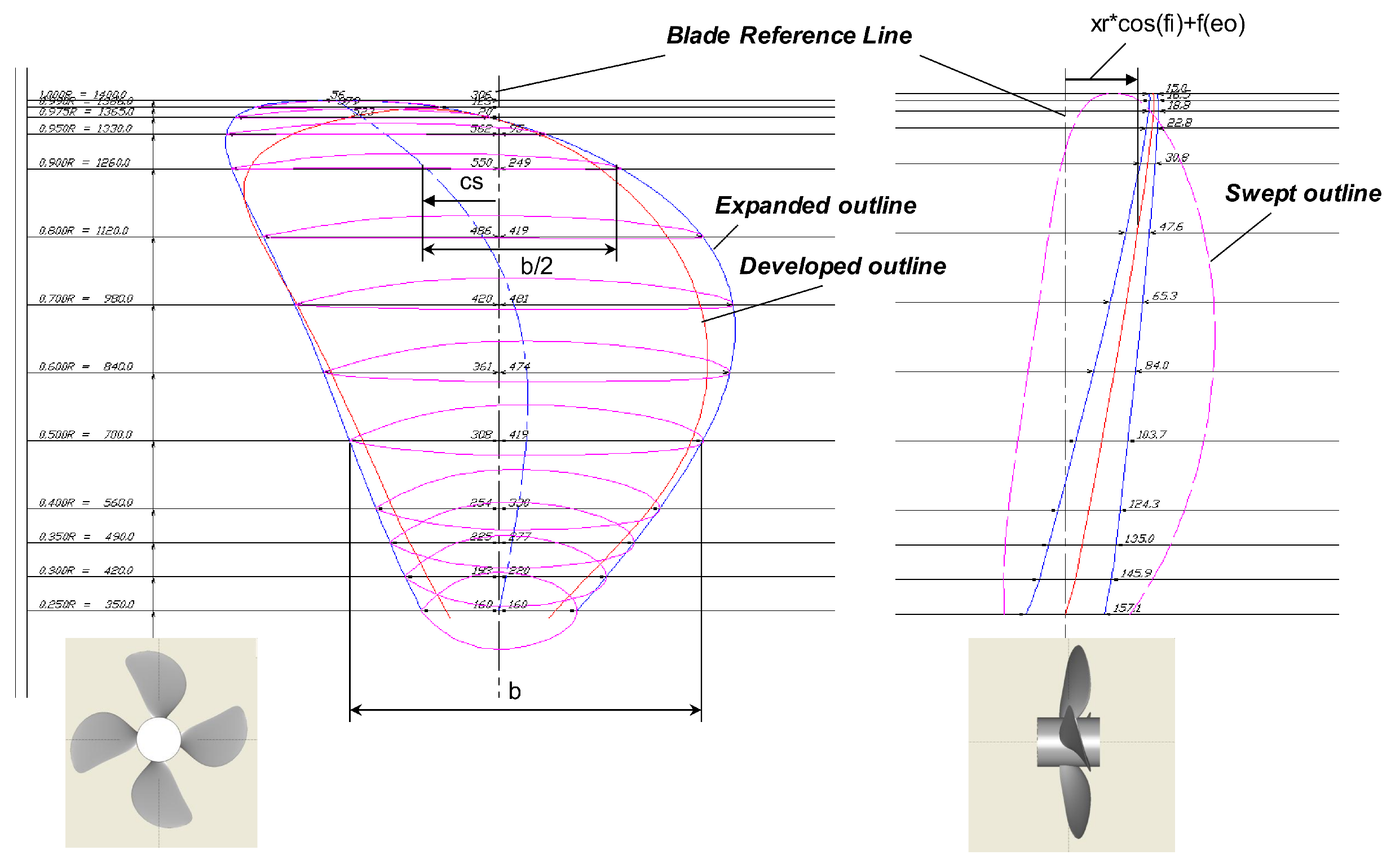
References
- Young, Y.L. Fluid-structure interaction analysis of flexible composite marine propellers. J. Fluids Struct. 2008, 24, 799–818. [Google Scholar] [CrossRef]
- Young, Y.L.; Garg, N.; Brandner, P.A.; Pearce, B.W.; Butler, D.; Clarke, D.; Phillips, A.W. Load-dependent bend-twist coupling effects on the steady-state hydroelastic response of composite hydrofoils. Compos. Struct. 2018, 189, 398–418. [Google Scholar] [CrossRef]
- Mouritz, P.; Gellert, E.; Burchill, P.; Challis, K. Review of advanced composite structures for naval ships and submarines. Compos. Struct. 2001, 53, 21–42, ISSN 0263-8223. [Google Scholar] [CrossRef]
- Atkinson, P.; Glover, E.J. Propeller hydroelastic effects. In Proceedings of the Propellers 88 Symposium, Virginia Beach, VA, USA, 20–21 September 1988. [Google Scholar]
- Savio, L. Measurements of the deflection of a flexible propeller blade by means of stereo imaging. In Proceedings of the SMP2015—The Fourth International Symposium on Marine Propulsors, Austin, TX, USA, 31 May–4 June 2015. [Google Scholar]
- Maljaars, P.; Bronswijk, L.; Windt, J.; Grasso, N.; Kaminski, M. Experimental Validation of Fluid-Structure Interaction Computations of Flexible Composite Propellers in Open Water Conditions Using BEM-FEM and RANS-FEM Methods. J. Mar. Sci. Eng. 2018, 6, 51. [Google Scholar] [CrossRef] [Green Version]
- Young, Y.L. Dynamic hydroelastic scaling of self-adaptive composite marine rotors. Compos. Struct. 2010, 92, 97–106. [Google Scholar] [CrossRef]
- Achkinadze, A.S.; Krasilnikov, V.I. A Numerical Lifting-Surface Technique for Account of Radial Velocity Component in Screw Propeller Design Problem. In Proceedings of the 7th International Conference on Numerical Ship Hydrodynamic NSH7, Nantes, France, 19–22 July 1999. [Google Scholar]
- Achkinadze, A.S.; Krasilnikov, V.I.; Stepanov, I.E. A Hydrodynamic Design Procedure for Multi-Stage Blade-Row Propulsors Using Generalized Linear Model of the Vortex Wake. In Proceedings of the Propellers/Shafting’2000 SNAME Symposium, Virginia Beach, VA, USA, 20–21 September 2000. [Google Scholar]
- JCGM. JCGM 100:2008. GUM 1995 with Minor Corrections-Valuation of Measurement Data—Guide to the Expression of Uncertainty in Measurement; JCGM: Paris, France, 2008. [Google Scholar]
- Hou, G.; Wang, J.; Layton, A. Numerical Methods for Fluid-Structure Interaction—A Review. Commun. Comput. Phys. 2012, 12, 337–377. [Google Scholar] [CrossRef]
- Bazilevs, Y.; Calo, V.M.; Hughes, T.J.; Zhang, Y. Isogeometric fluid-structure interaction: Theory, algorithms, and computations. Comput. Mech. 2008, 43, 3–37. [Google Scholar] [CrossRef]
- Degroote, J.; Haelterman, R.; Annerel, S.; Bruggeman, P.; Vierendeels, J. Performance of partitioned procedures in fluid–structure interaction. Comput. Struct. 2010, 88, 446–457. [Google Scholar] [CrossRef] [Green Version]
- Siemens PLM Software. STAR-CCM+ v12.04 User Guide; Siemens PLM Software: Plano, TX, USA, 2017. [Google Scholar]
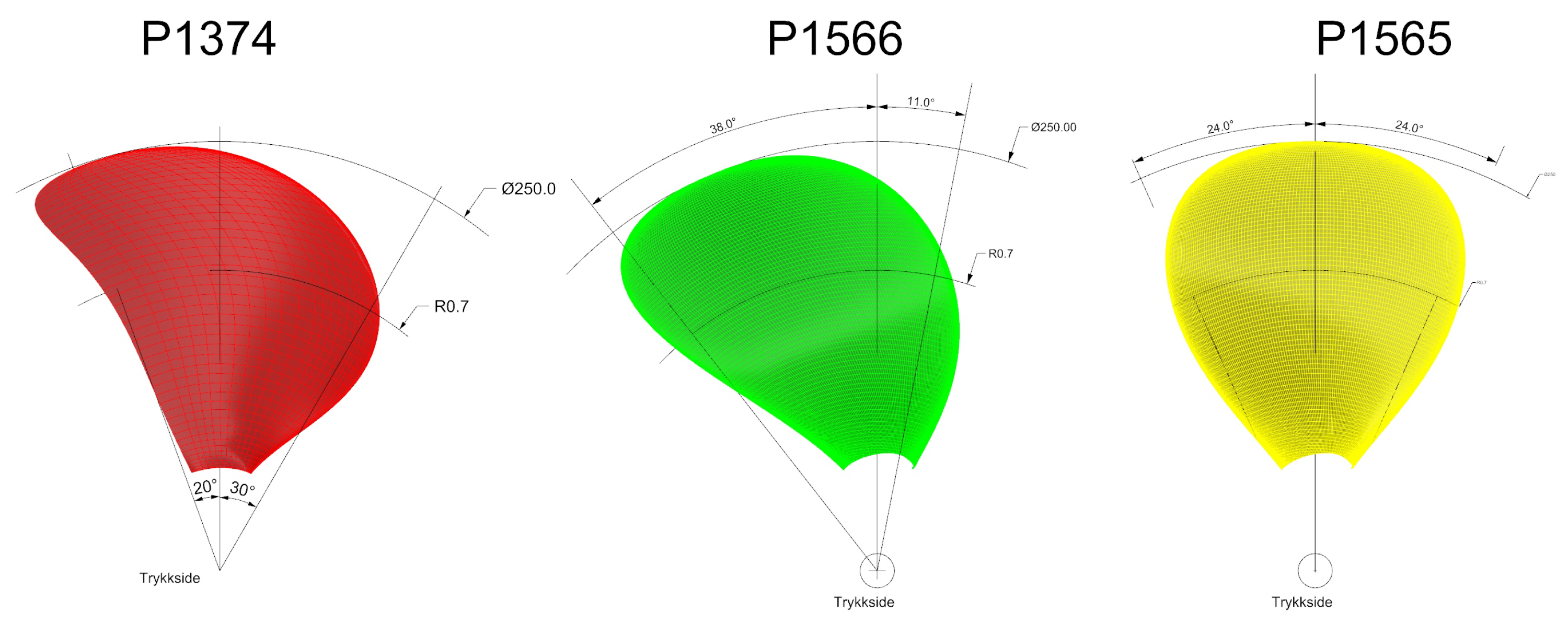
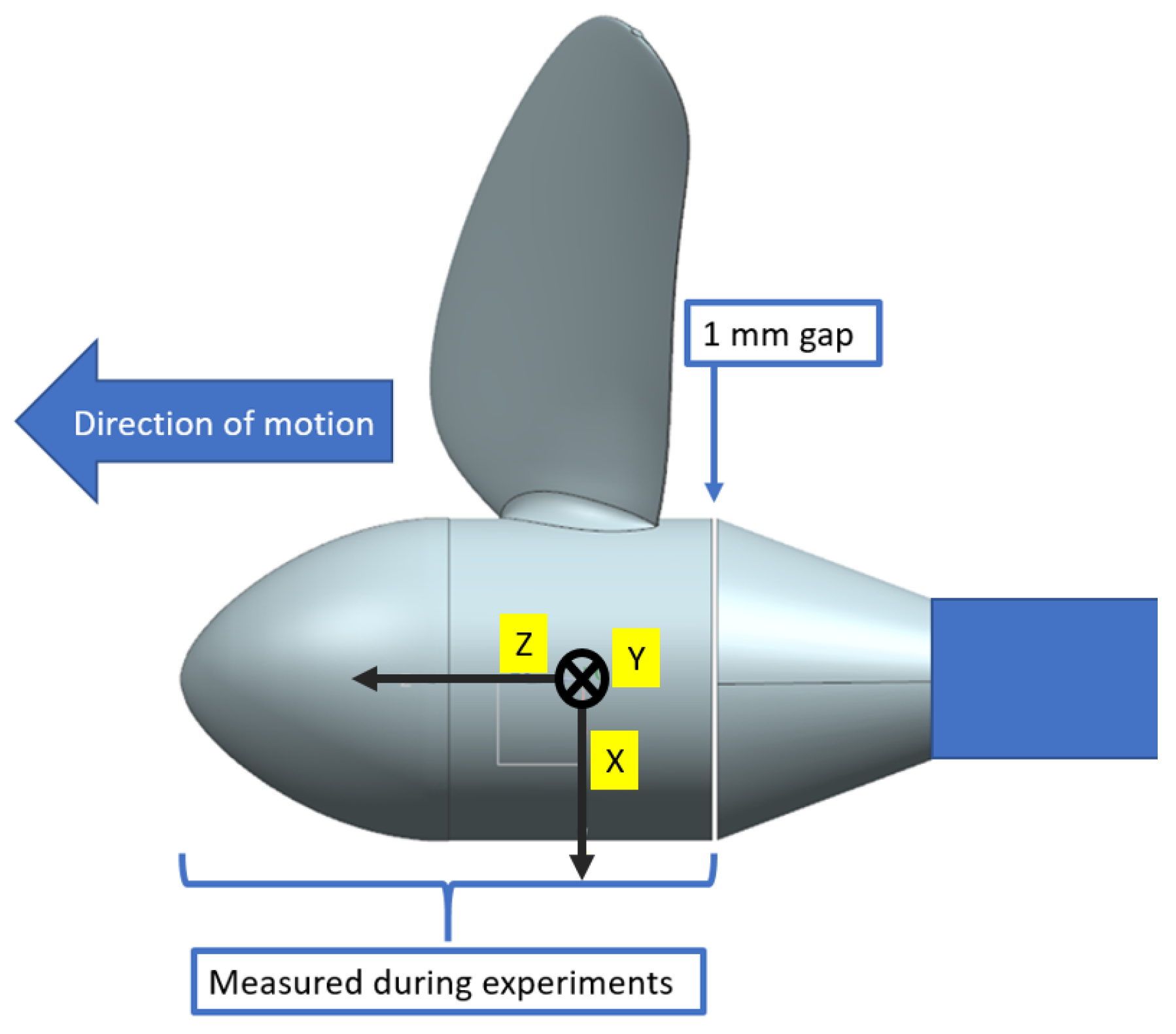
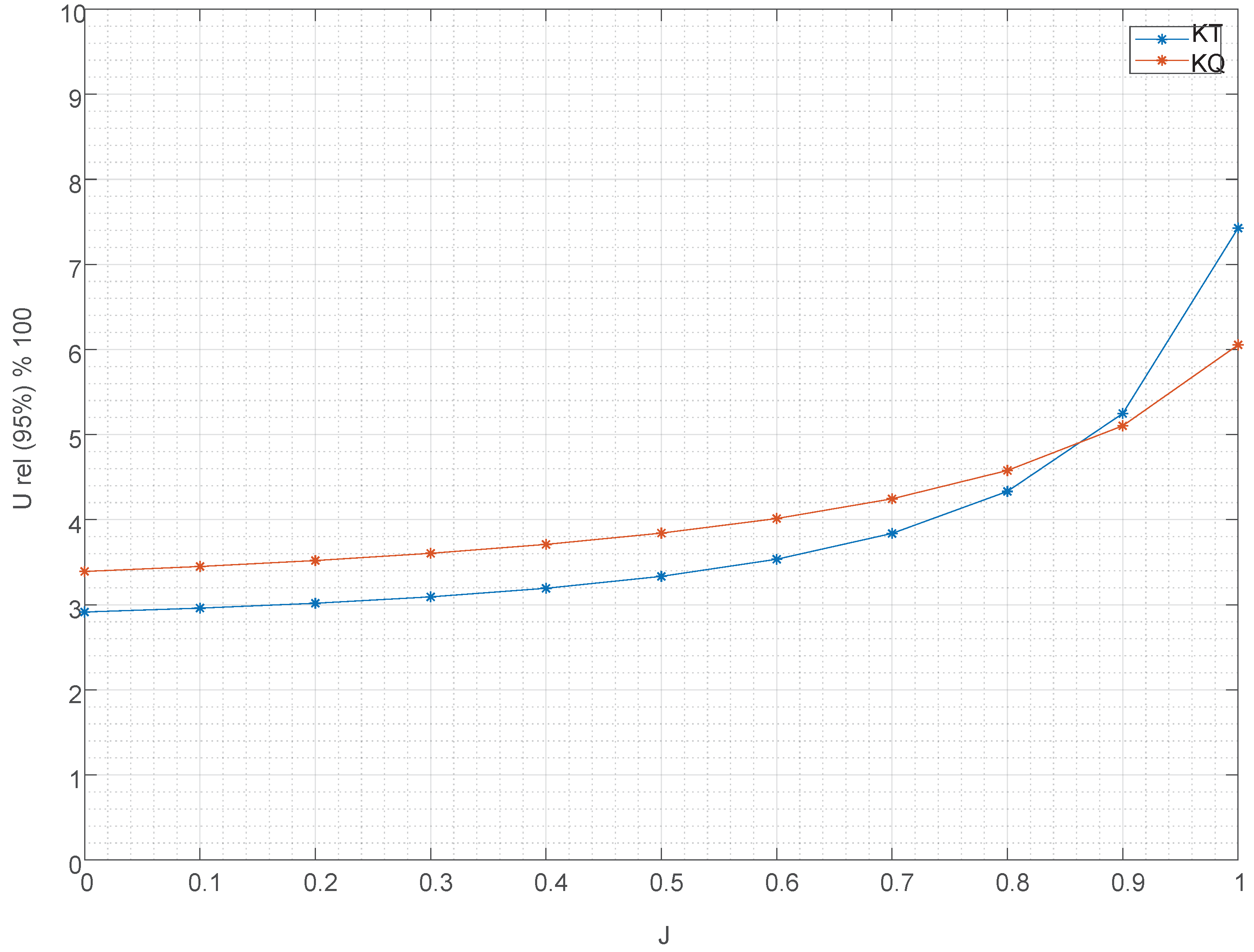
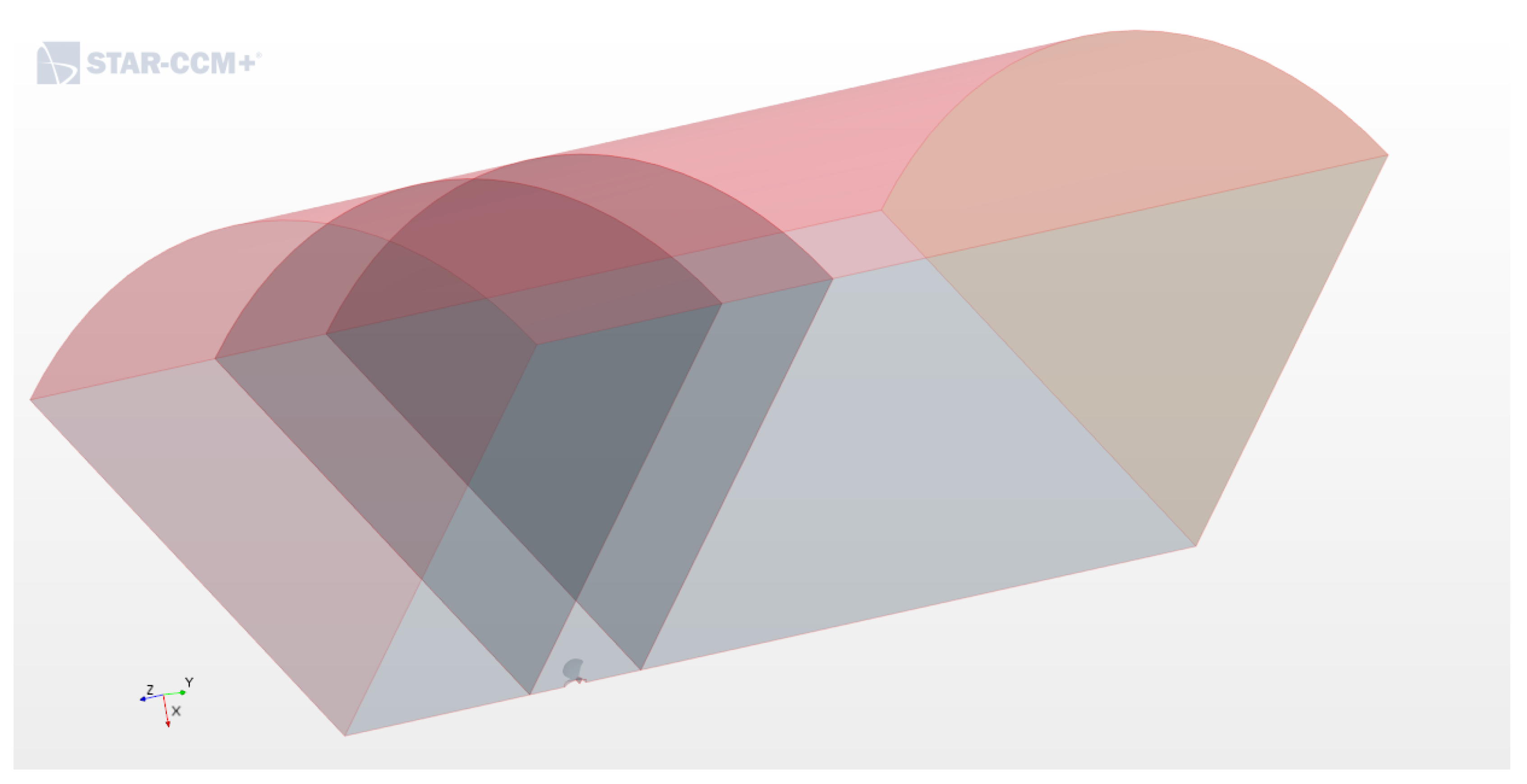


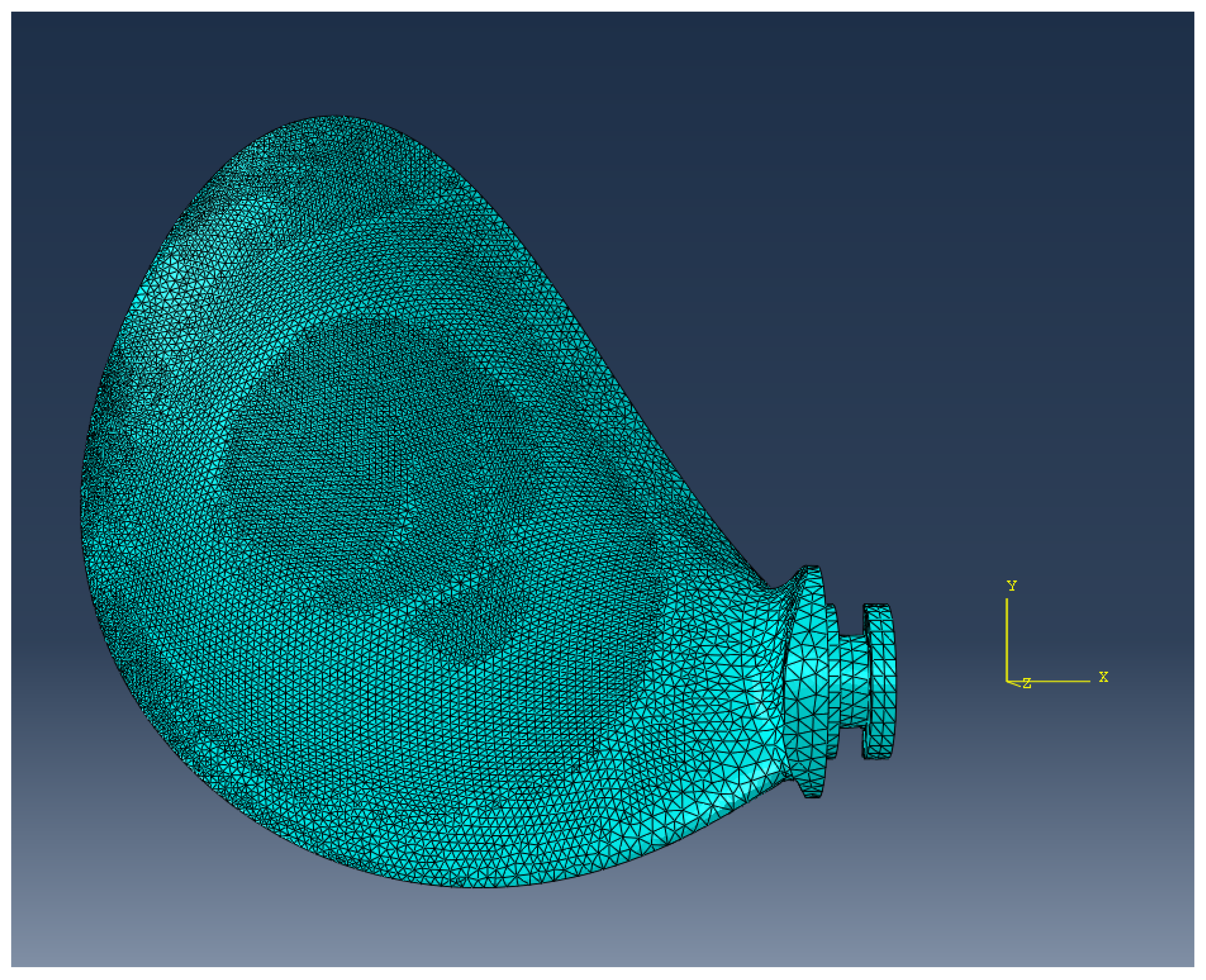

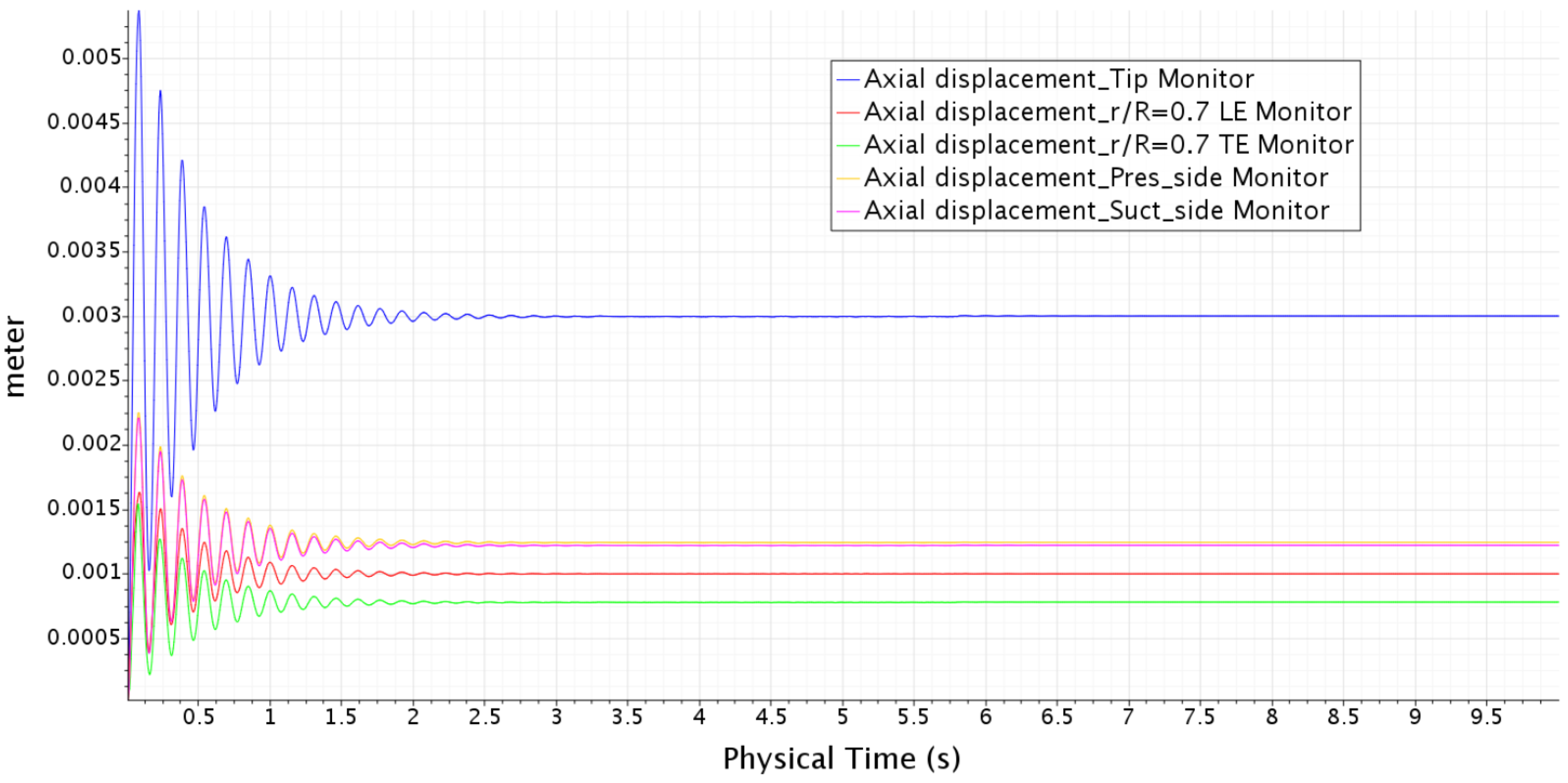
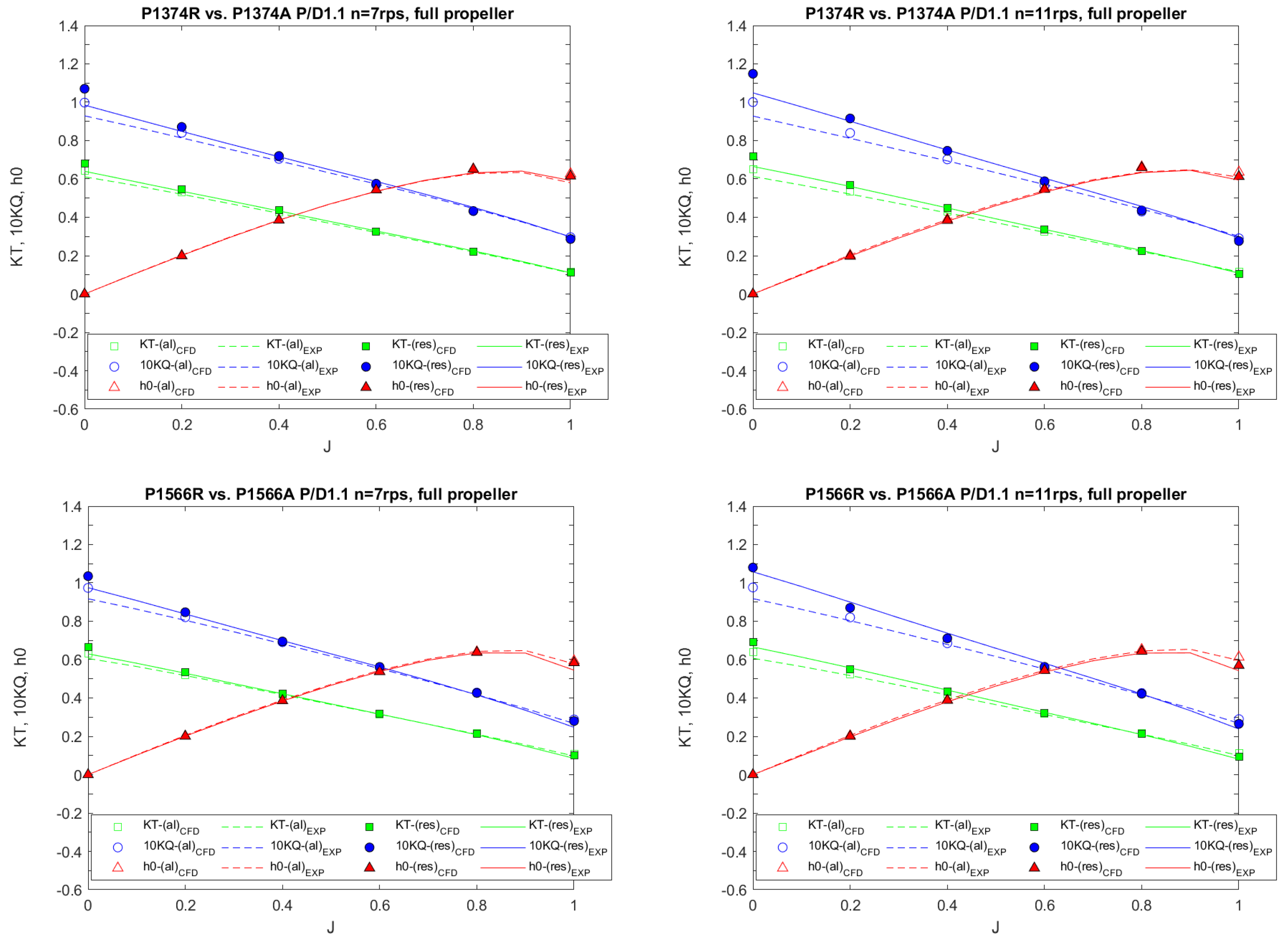
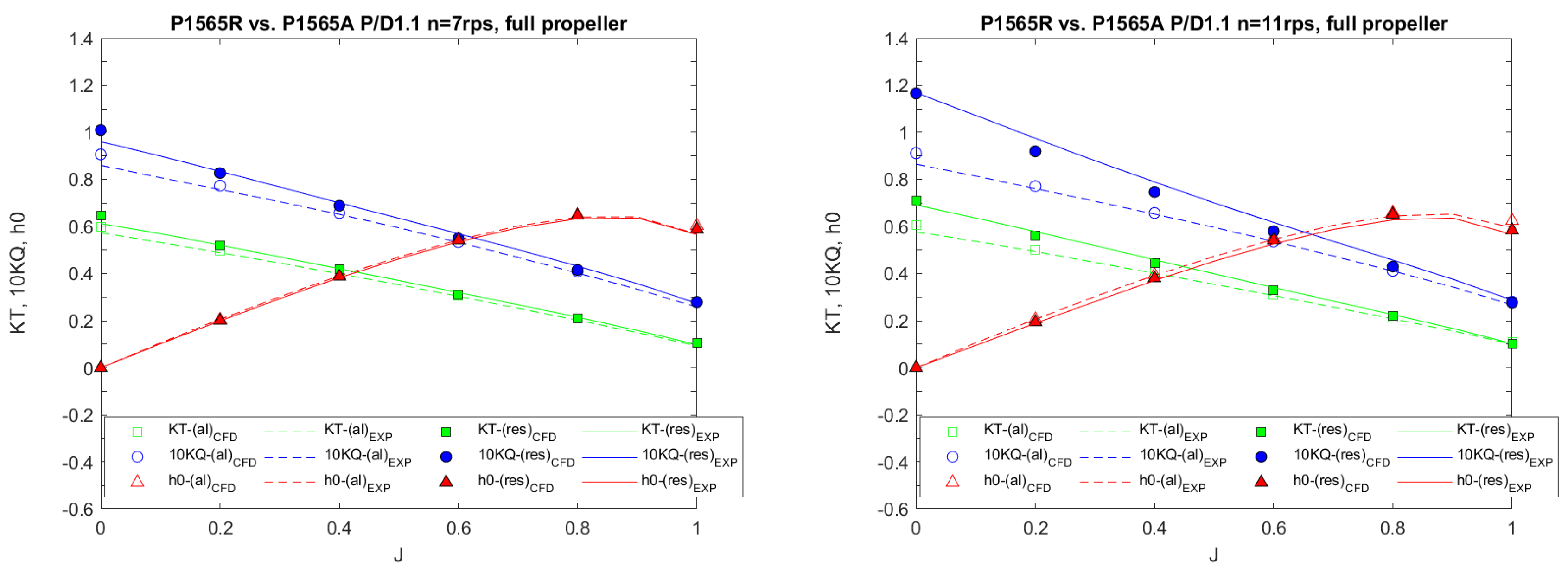
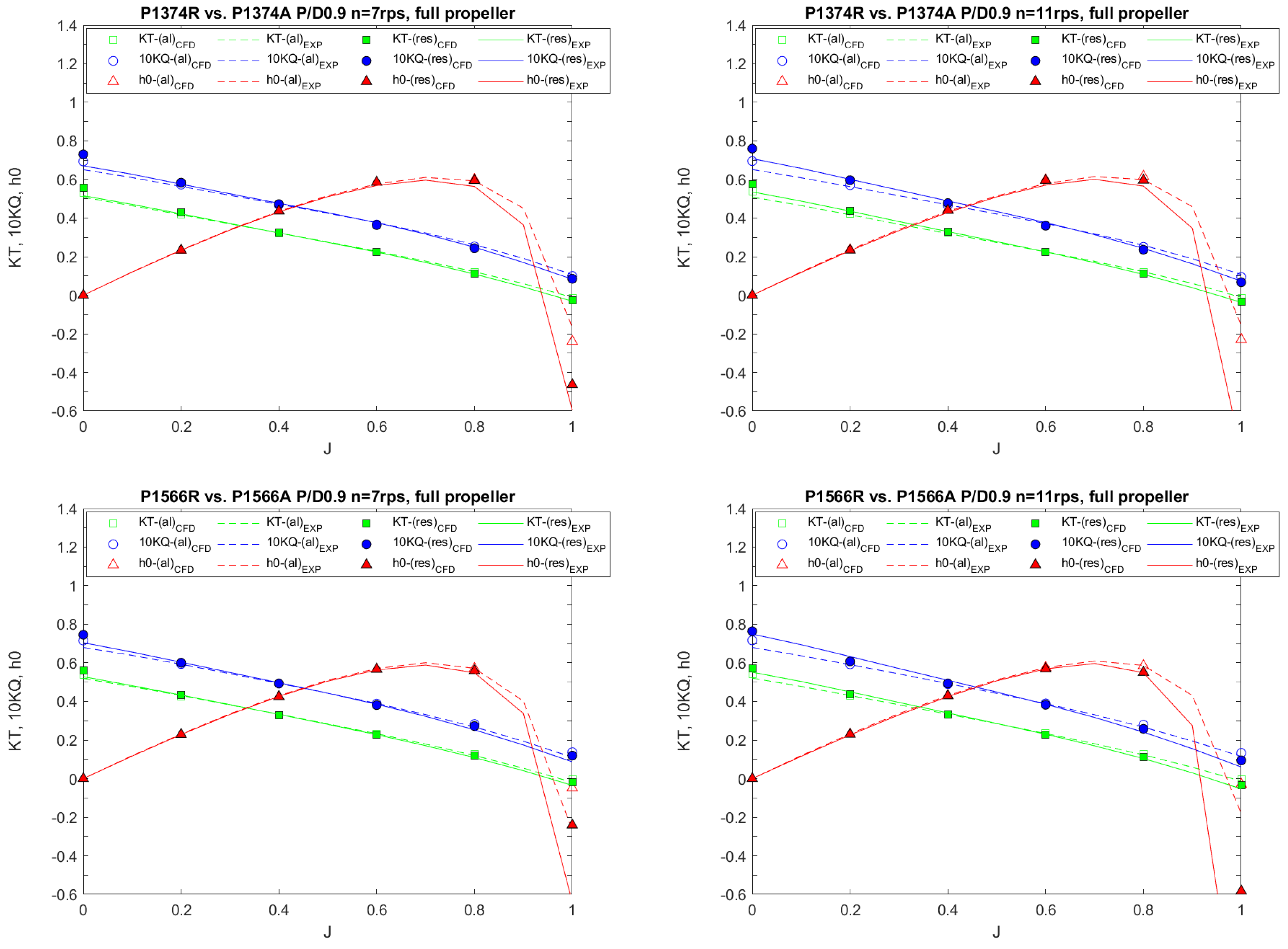

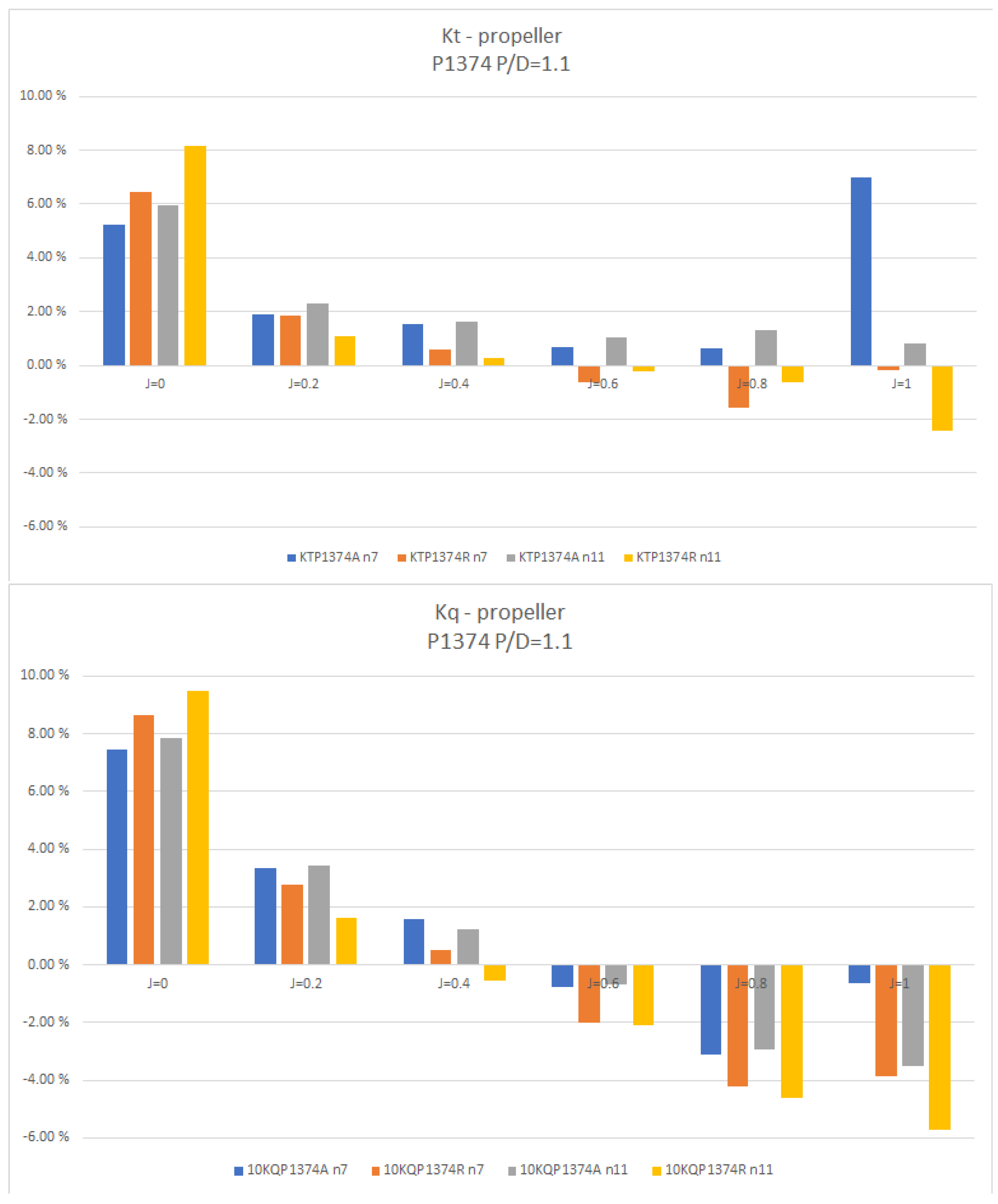


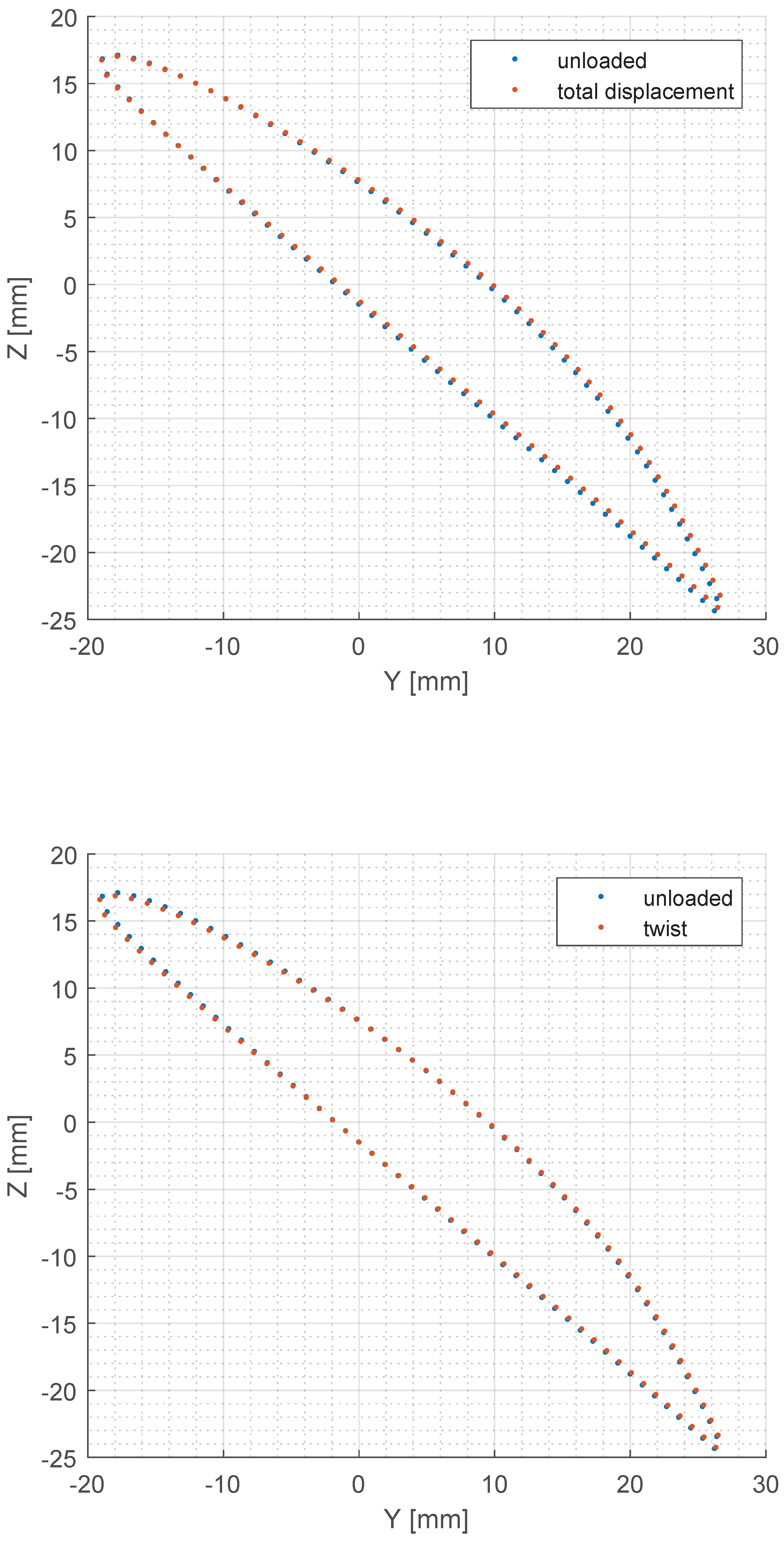

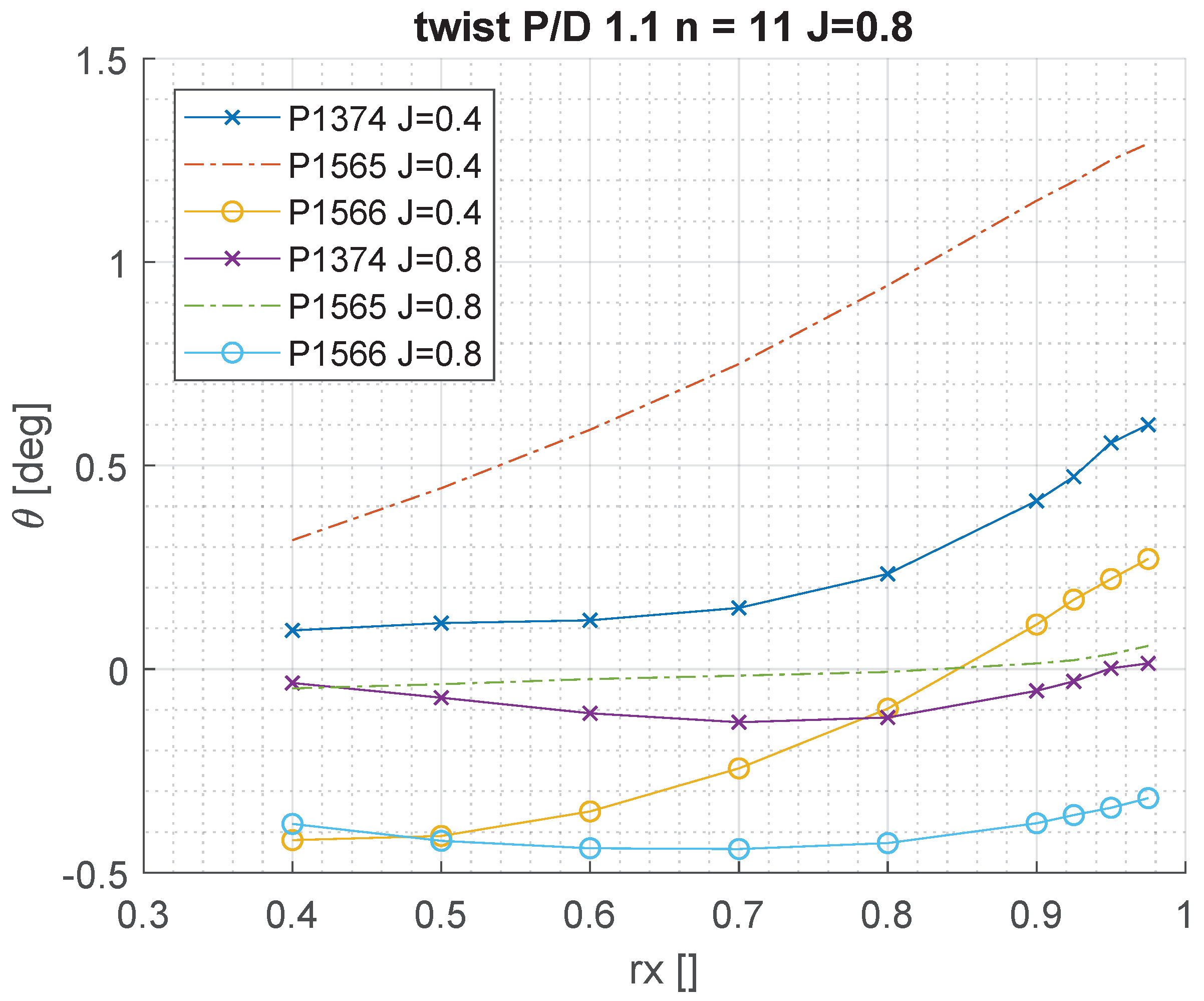
© 2020 by the authors. Licensee MDPI, Basel, Switzerland. This article is an open access article distributed under the terms and conditions of the Creative Commons Attribution (CC BY) license (http://creativecommons.org/licenses/by/4.0/).
Share and Cite
Savio, L.; Sileo, L.; Kyrre Ås, S. A Comparison of Physical and Numerical Modeling of Homogenous Isotropic Propeller Blades. J. Mar. Sci. Eng. 2020, 8, 21. https://doi.org/10.3390/jmse8010021
Savio L, Sileo L, Kyrre Ås S. A Comparison of Physical and Numerical Modeling of Homogenous Isotropic Propeller Blades. Journal of Marine Science and Engineering. 2020; 8(1):21. https://doi.org/10.3390/jmse8010021
Chicago/Turabian StyleSavio, Luca, Lucia Sileo, and Sigmund Kyrre Ås. 2020. "A Comparison of Physical and Numerical Modeling of Homogenous Isotropic Propeller Blades" Journal of Marine Science and Engineering 8, no. 1: 21. https://doi.org/10.3390/jmse8010021





